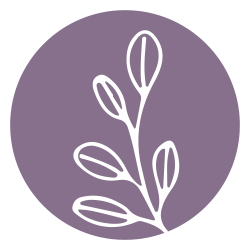Cups Aren’t Just for Drinking
Written by Dr. Ramnique Ubhi, ND
Have you been struggling with back pain and going up and down the stairs? Is your arthritis flaring up and causing you to be less active? Instead of reaching for another pain killer, consider cupping therapy
Cupping is an ancient therapy that has been around for centuries and used to treat numerous health concerns, ranging from chronic pain and migraines to asthma and PMS symptoms. Some of the oldest literature discussing cupping for medical treatment is from Ancient Egypt, dating back to ca. 1500 BC. Cupping was even used in Europe during the Renaissance period to help with gout and arthritis! Not only is cupping an age-old therapeutic technique, but it is still used by many cultures, such as in Arabic, Chinese, Korean, Unani, and Tibetan traditional medicine.
The practice of cupping is essentially how it sounds: different sized hollow cups are placed on various parts of the body. Specifically, the cups are placed on the surface of the skin, away from sensitive areas such as the eyes, veins, arteries and wounds, and a negative pressure, like a vacuum, is created to draw the skin and surface tissue upward. This suction force is created by fire or manual and electric instruments to pull the air out of the cup. The cups can be made from glass, silicone, plastic, bamboo, rubber, etc., based on the form of cupping used.
A variety of cupping methods can be utilized depending on the concern and desired outcome. There is dry, wet, flash, retention, massage and sliding cupping techniques to name a few. For example, a cup is placed on lubricated skin and moved back and forth in sliding cupping techniques. This method is great for warming the area, helping with relaxing the muscles and moving blood, lymphatics, and fluid. Different substances can even be added to the cups before being placed on the skin, such as herbal decoctions, water and moxa, to further the healing process. Each method has its own benefits and can be used in combination with acupuncture and/or as an adjunct treatment with diet, lifestyle, herbs, and nutritional supplementation.
But how does cupping actually work? In Traditional Chinese Medicine, cupping is used to warm and move Qi, stagnation, and blood and to remove pathogenic factors in order to restore balance to the body. At a physiological level, cupping is thought to be effective and promote healing through the creation of suction and negative pressure on the skin. This force helps with supporting blood and fluid circulation, loosening adhesions, reducing inflammation, improving the immune response, mobilizing local metabolism, stimulating the nervous system, and increasing pain threshold. Through these actions, cupping is proposed to modify the biochemistry and physiology beneath the skin to aid in recovery and prevention of disease.
Cupping therapy can be used for more than just sore and tight muscles, it can help with numerous local and systemic, full body concerns. Locally, cupping is great at reducing back pain, joint pain like arthritis in the knees, neck pain, menstrual cramps and even helping with carpal tunnel syndrome and chronic headaches and migraines. Other uses of cupping are for diabetes and high blood pressure control, Rheumatoid arthritis, respiratory issues, Fibromyalgia, shingles, plaque psoriasis and digestive concerns. Facial and cosmetic cupping is also becoming more and more popular, where stimulation of the skin can help with reducing fine lines, wrinkles, and cellulite. The list is endless!
If you want to learn more or discuss if cupping is right for you, give us a call at 613-767-6982.
References
1. Aboushanab, T. S., & AlSanad, S. (2018). Cupping therapy: an overview from a modern medicine perspective. Journal of acupuncture and meridian studies, 11(3), 83-87.
2. Choi, T. Y., Ang, L., Ku, B., Jun, J. H., & Lee, M. S. (2021). Evidence Map of Cupping Therapy. Journal of clinical medicine, 10(8), 1750. https://doi.org/10.3390/jcm10081750
3. Qureshi, N. A., Ali, G. I., Abushanab, T. S., El-Olemy, A. T., Alqaed, M. S., El-Subai, I. S., & Al-Bedah, A. M. (2017). History of cupping (Hijama): a narrative review of literature. Journal of integrative medicine, 15(3), 172-181.

